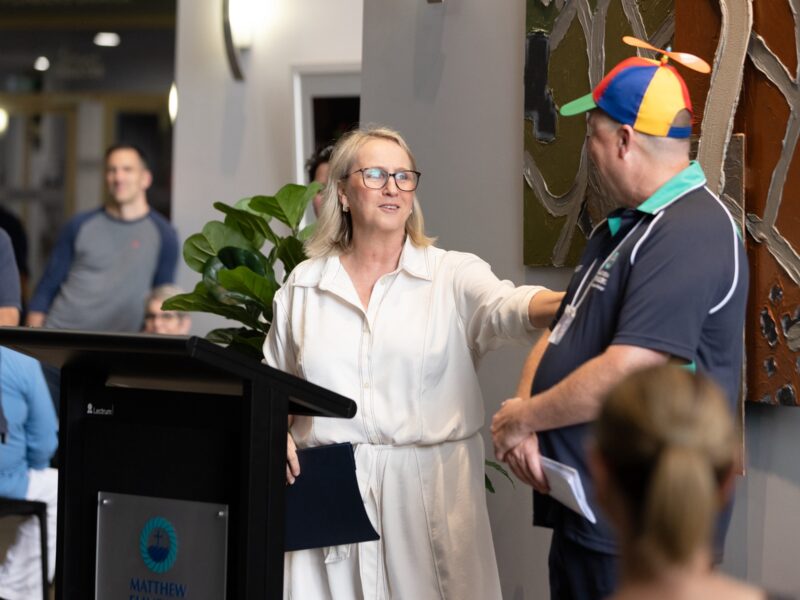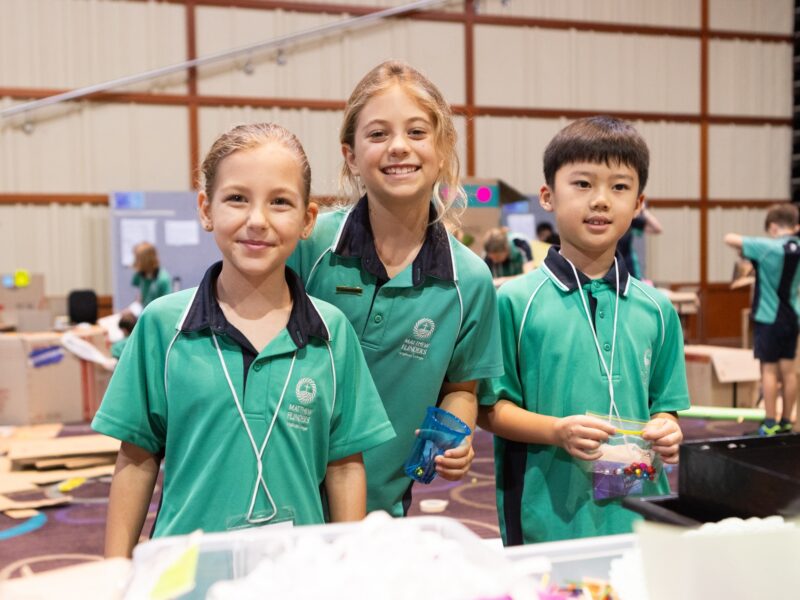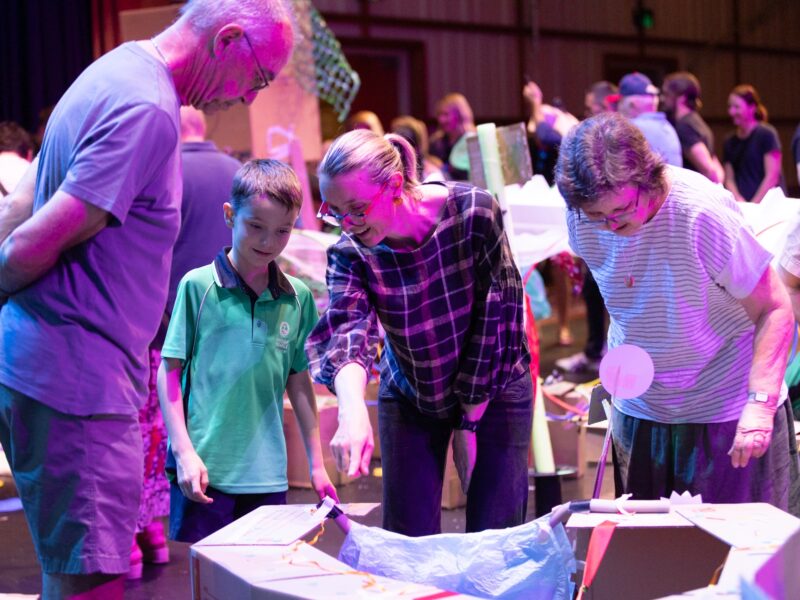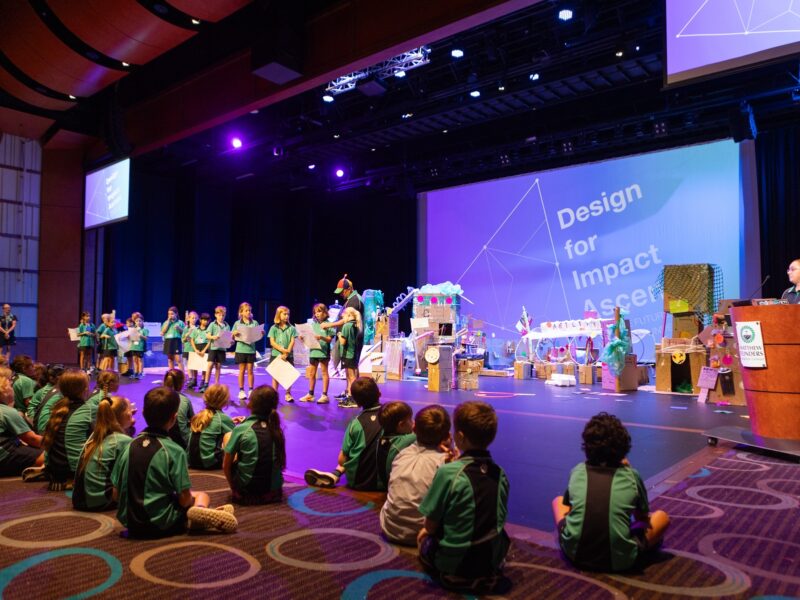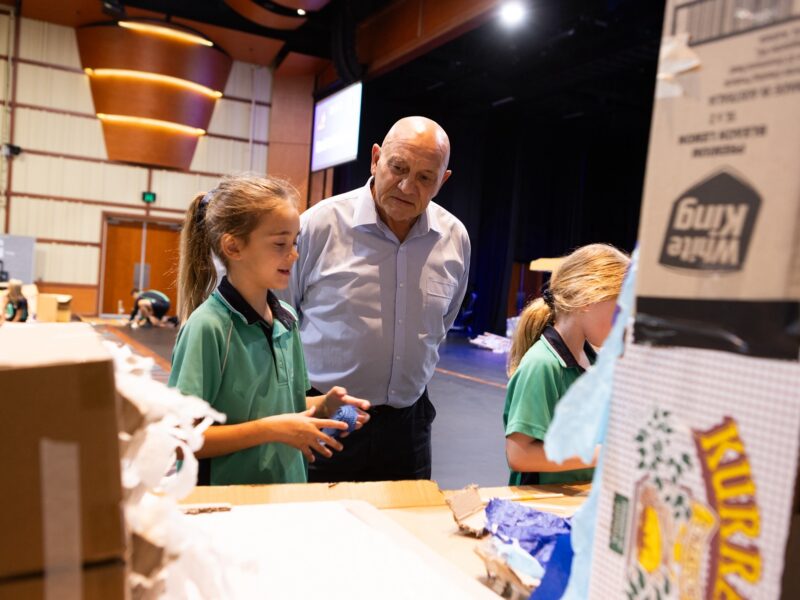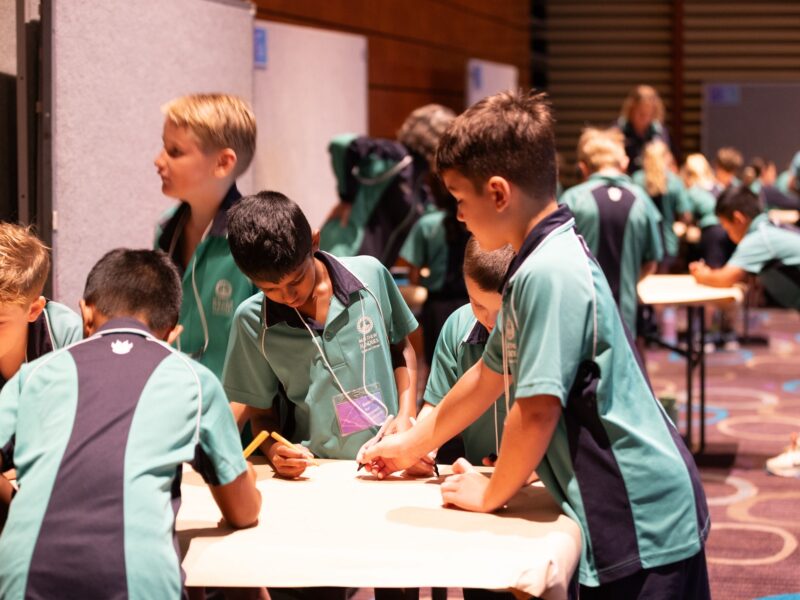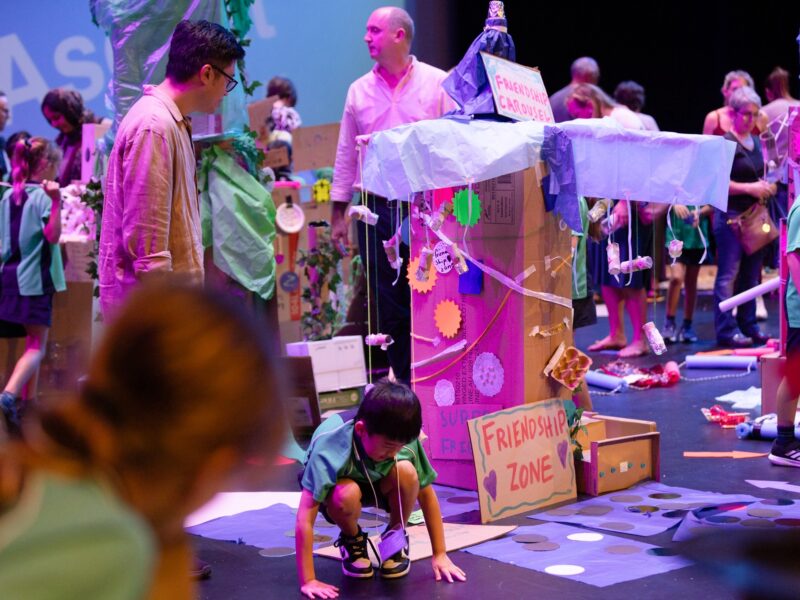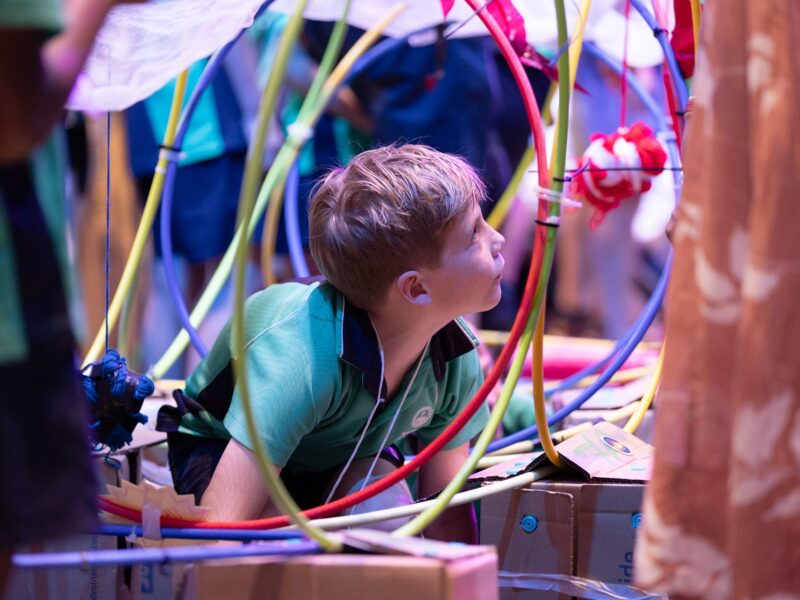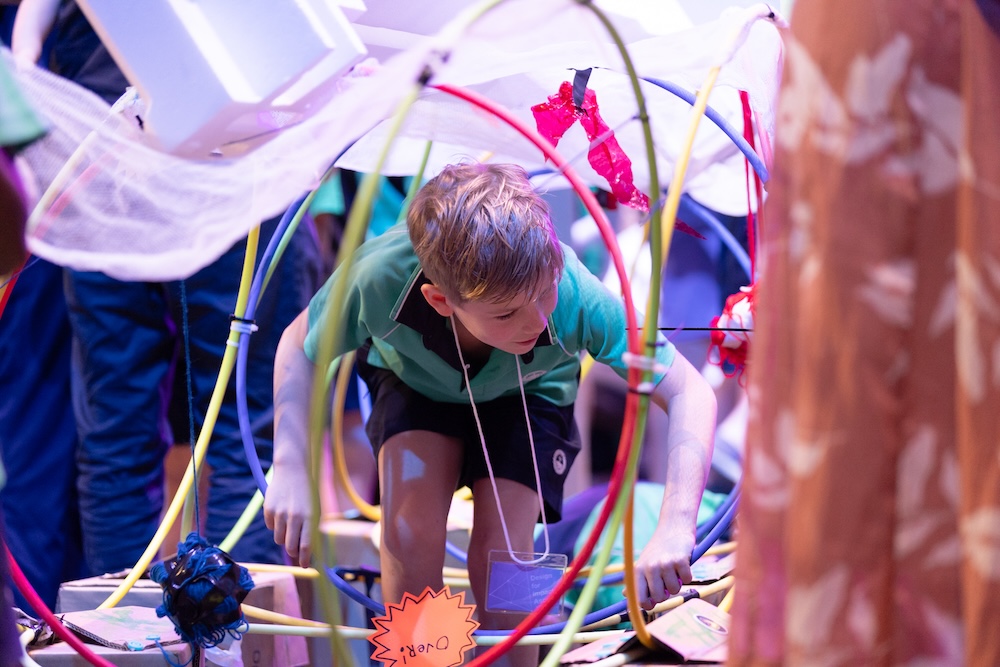The entire Year 3 cohort at Matthew Flinders Anglican College engaged in the two-day Design Ascent, an immersive milestone event as part of their i-Impact human-centred design thinking curriculum, from Wednesday, 23 April to Thursday, 24 April.
See some of the event photos in the gallery below.
The Design Ascent invited the Year 3 students to tackle a real-world challenge:
“How might we design and construct a unique playground suitable for Years 2-4 students that is safe, inclusive, challenging and exciting?”
It was clear the Year 3 students enjoyed the opportunity to step out of the classroom and work together, exploring ideas that were creative, bold, daring and brilliant!
Students engage in three immersive design events over their Primary School journey at Flinders: the Design Base Camp in Year 1, the Design Ascent in Year 3 and the Design for Impact Summit in Year 5.
The events are an exciting opportunity to practice their growing knowledge of the five stages of design thinking (Empathise, Define, Ideate, Prototype and Test).
Students develop this knowledge and a range of valuable skills and dispositions through their Wonder lessons and I-care or i-Impact curriculum—programs which are all bespoke to Flinders and begin from the Prep year all the way through to Year 6, helping to prepare them for the opportunities and rigour of Secondary School.
Tackling Real-World Challenges with Design Thinking
Throughout the Design Ascent, students were guided by Mr Justin Hill, Flinders' Head of Enterprise and Curiosity in the Primary School, and their Year 3 teachers, along with industry experts who provided handy information and "hijacked" their thinking!
Using the Flinders Performance Centre as their headquarters, the students worked in small teams on their playground themes.
First, they empathised with their users (children who use the playground, and staff and parents who care about the playground's safety and role in child development) and then took time to define and research the problem before getting creative and ideating solutions.
They were then guided to design and build their sprawling playground prototype, using paper, cardboard, craft and other recycled items.
Each group was given specific themes that are essential in designing a safe, inclusive, challenging and exciting playground; themes such as calm, nature, music, balance, agility, climbing and strength, role play, friend zone, ground floor, technology, hand-eye coordination and art group.
Mr Hill said, “Our i-Impact curriculum and Design Ascent is all about nurturing adaptable, flexible thinkers—students who aren’t just solving problems, but actively seeking them out.
“We’re developing young people who have the confidence to face life’s challenges with empathy, creativity and the resilience to keep going when things get tough.
“At Flinders, we want our students to be innovative collaborators—capable of working with others to design meaningful solutions that truly make a difference.
“The Design Ascent gives students the perfect opportunity to put this mindset into action—to learn by doing, to grow through experience and to become future-ready change-makers.”
Some of the Year 3 parents and carers came along to view the final prototype at the Term 2 Learning in Action: Design Ascent parent engagement session on Thursday, 24 April.
The Flinders Primary School's parent engagement sessions are held once per term for each year level, and are newly named “Learning in Action”, with a refreshed format to make the sessions even more meaningful and give parents a chance to chat and connect either before or after the session.
Each session begins with a brief introduction by a member of the teaching team or leadership team, sharing insights into the learning focus, the programs and strategies being used in class, and the research that informs our practice, before parents join the students in the classroom or learning space to engage directly with the hands-on learning experience.
Why it matters: The power of human-centred design thinking
At the Learning in Action session with Year 3 parents, Mrs Trudi Edwards, the Head of Primary, explained, “Human-centred design thinking is the underlying methodology from Prep through to Year 6 in our Flinders Primary School.
“This methodology extends into our Secondary School, for example through our Year 7 IDEAS program, the Year 9 Year to RISE program and beyond.
“We are incredibly proud of our bespoke I-Impact and I-care programs and three immersive design events (Design Base Camp in Year 1, Design Ascent in Year 3 and Design for Impact Summit in Year 5).
The following key points provide more insight as to WHY the Flinders Primary School developed the I-care and i-Impact programs as an academic approach and also as a way of fully integrating character development into our curriculum.
1. It builds Empathy and Social-Emotional Intelligence
At the heart of human-centred design is empathy—the ability to understand others’ perspectives, feelings, and needs.
Why this matters: Empathy is foundational to social-emotional intelligence (Goleman, 1995), a key predictor of lifelong success. When children practise empathy, they become better communicators, teammates, and citizens.
2. It develops Resilience and Self-Regulation
With now 36 years in education, I believe wholeheartedly that these two social and emotional skills are ones that need to be prioritised. Design thinking embraces iteration, encouraging students to fail forward, and try again which provides a context to support students to develop appropriate self-regulation when things don’t go to plan.
Why this matters: Resilience, also known as the ability to bounce back from setbacks, is a critical skill for both learning and life. In design thinking, failure isn’t an end-point; it’s a learning opportunity and through failing, students build the skills to regulate by identifying how big the issue really is and what the appropriate emotional response might be. Students build prototypes, test them, receive feedback and improve. Such experiences not only build resilience, but they also build a mindset that failure is learning, and that attitude is a gift in life.
3. It cultivates Creative and Critical Problem Solving
Design thinking develops a disposition for tackling complex, ambiguous problems creatively and thoughtfully and in doing so we can have the great privilege of enhancing each of our students' enterprising spirit.
Why this matters: The World Economic Forum lists problem-solving, critical thinking, and creativity as top skills for the future workforce and here at Flinders, we teach these from Prep.
4. It encourages Collaboration and Communication
Design thinking is inherently collaborative, with students working in teams to ideate, build, and refine solutions.
Why this matters: Learning to listen, negotiate, and co-create are essential for success in both school and life, and develop our children’s humanity as they learn to value different perspectives, build on each other’s ideas, and provide and receive constructive feedback, all whilst focusing on the end-user’s needs; in essence, putting others before themselves.
5. It fosters Purposeful, Real-World Learning
Design thinking connects learning to authentic, meaningful contexts. As Ms Carroll outlined, it breathes life into our Agency and Purpose quadrants of our Teaching and Learning Framework.
Why this matters: When students see the impact of their work on real people or issues, they become more engaged and motivated. Whether designing a better school lunch experience or a sustainable playground, students feel empowered to make a difference. The Buck Institute for Education shows increased engagement, deeper learning, and stronger skill development when students work on real-world problems.
6: It nurtures Student Agency and Voice
Design thinking empowers students to take ownership of their learning and become agents of change. Students who believe their ideas matter are more confident, motivated and willing to take initiative. Our students identify problems that matter to them and their communities, and they lead the process of finding solutions.
Why this matters: The OECD’s Future of Education and Skills 2030 project highlights the importance of student agency in developing not only the dispositions to engage as learners for life but also supports students to become responsible citizens.
Design Ascent : Year 3
